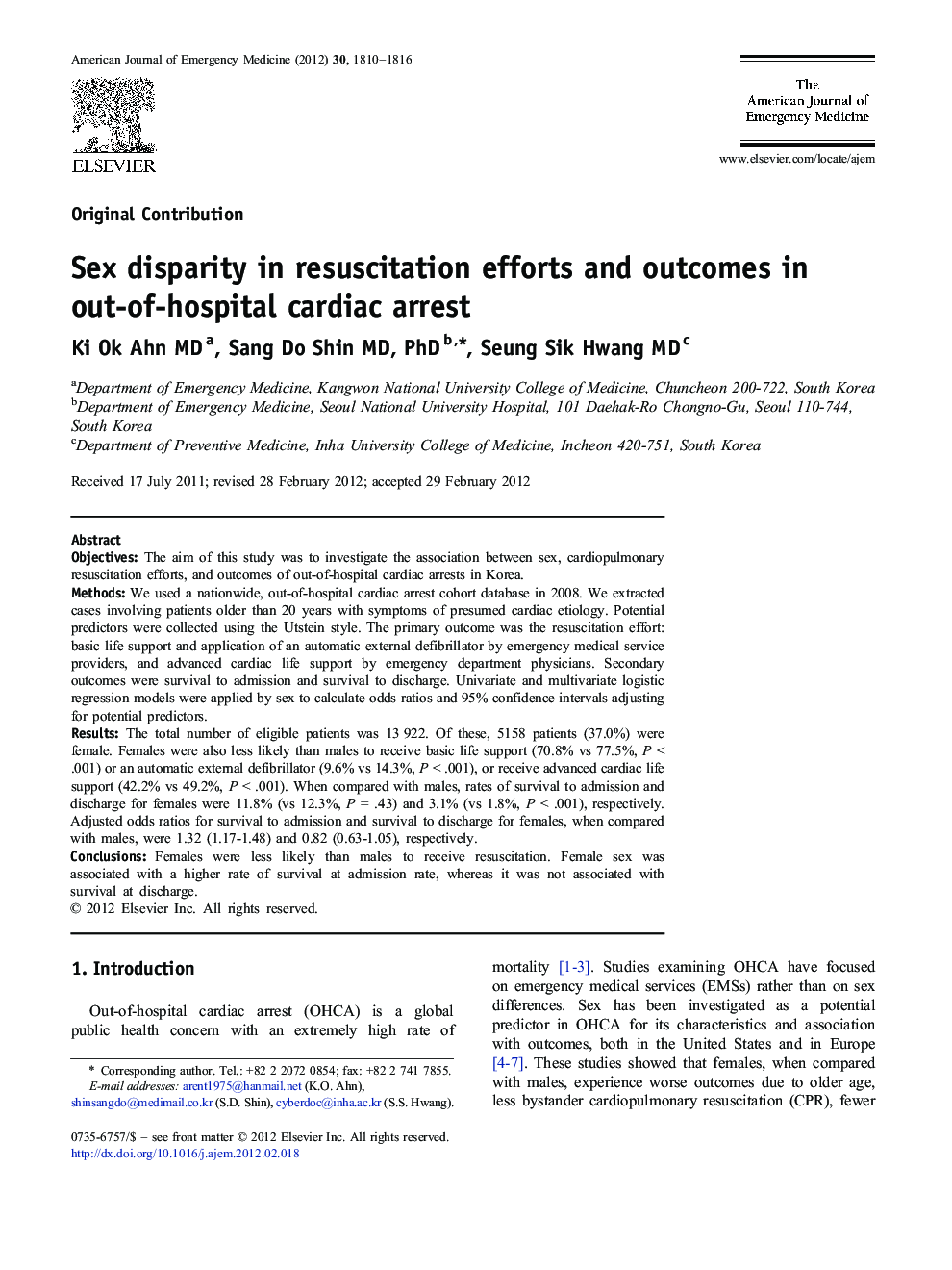| Article ID | Journal | Published Year | Pages | File Type |
|---|---|---|---|---|
| 3224899 | The American Journal of Emergency Medicine | 2012 | 7 Pages |
ObjectivesThe aim of this study was to investigate the association between sex, cardiopulmonary resuscitation efforts, and outcomes of out-of-hospital cardiac arrests in Korea.MethodsWe used a nationwide, out-of-hospital cardiac arrest cohort database in 2008. We extracted cases involving patients older than 20 years with symptoms of presumed cardiac etiology. Potential predictors were collected using the Utstein style. The primary outcome was the resuscitation effort: basic life support and application of an automatic external defibrillator by emergency medical service providers, and advanced cardiac life support by emergency department physicians. Secondary outcomes were survival to admission and survival to discharge. Univariate and multivariate logistic regression models were applied by sex to calculate odds ratios and 95% confidence intervals adjusting for potential predictors.ResultsThe total number of eligible patients was 13 922. Of these, 5158 patients (37.0%) were female. Females were also less likely than males to receive basic life support (70.8% vs 77.5%, P < .001) or an automatic external defibrillator (9.6% vs 14.3%, P < .001), or receive advanced cardiac life support (42.2% vs 49.2%, P < .001). When compared with males, rates of survival to admission and discharge for females were 11.8% (vs 12.3%, P = .43) and 3.1% (vs 1.8%, P < .001), respectively. Adjusted odds ratios for survival to admission and survival to discharge for females, when compared with males, were 1.32 (1.17-1.48) and 0.82 (0.63-1.05), respectively.ConclusionsFemales were less likely than males to receive resuscitation. Female sex was associated with a higher rate of survival at admission rate, whereas it was not associated with survival at discharge.
